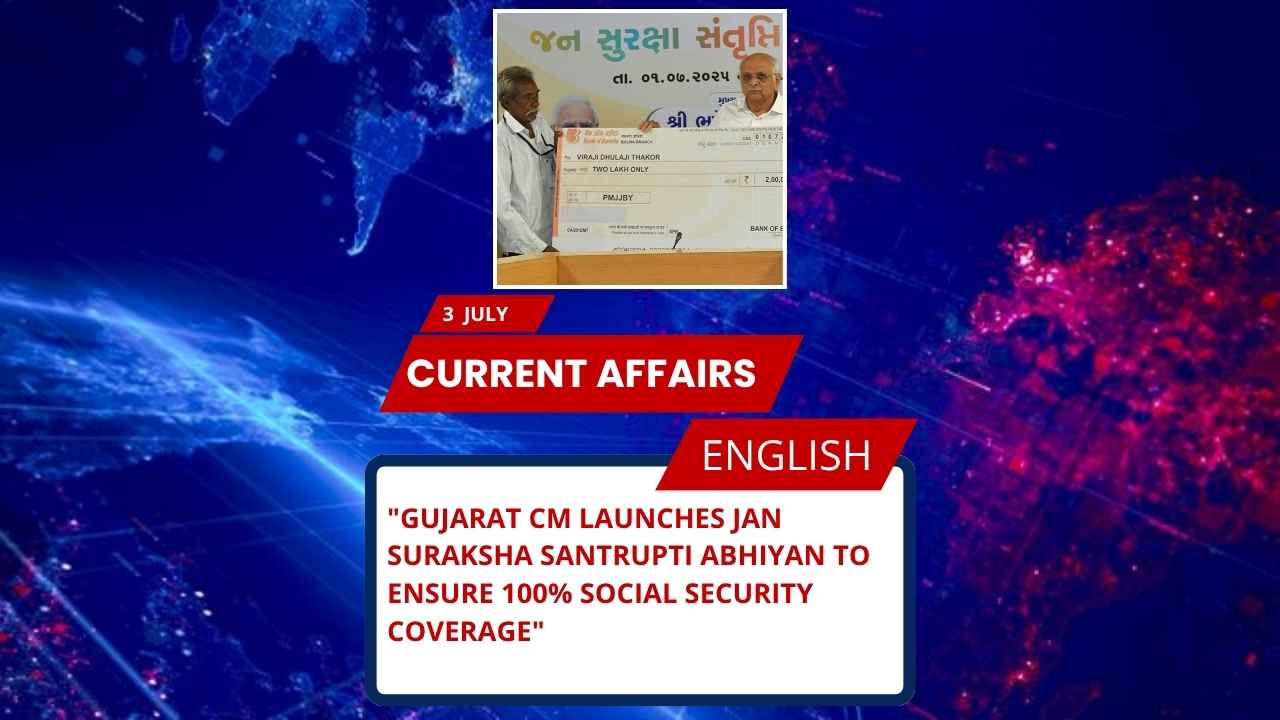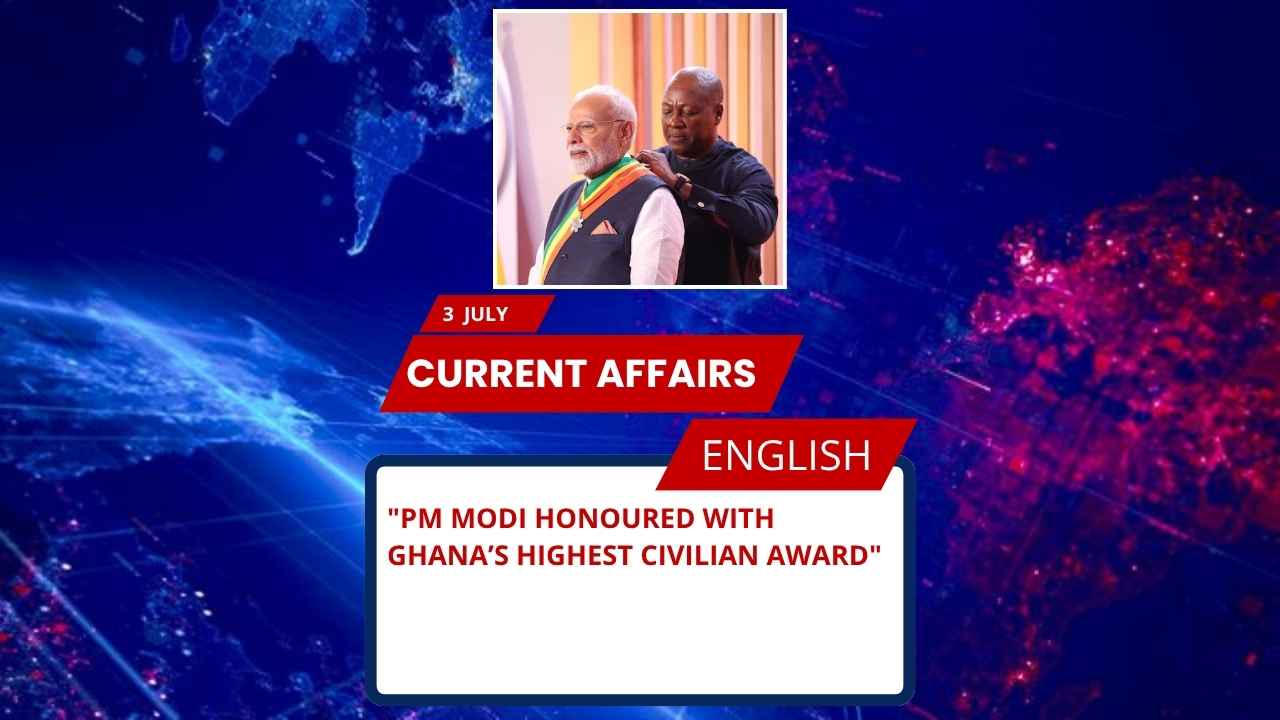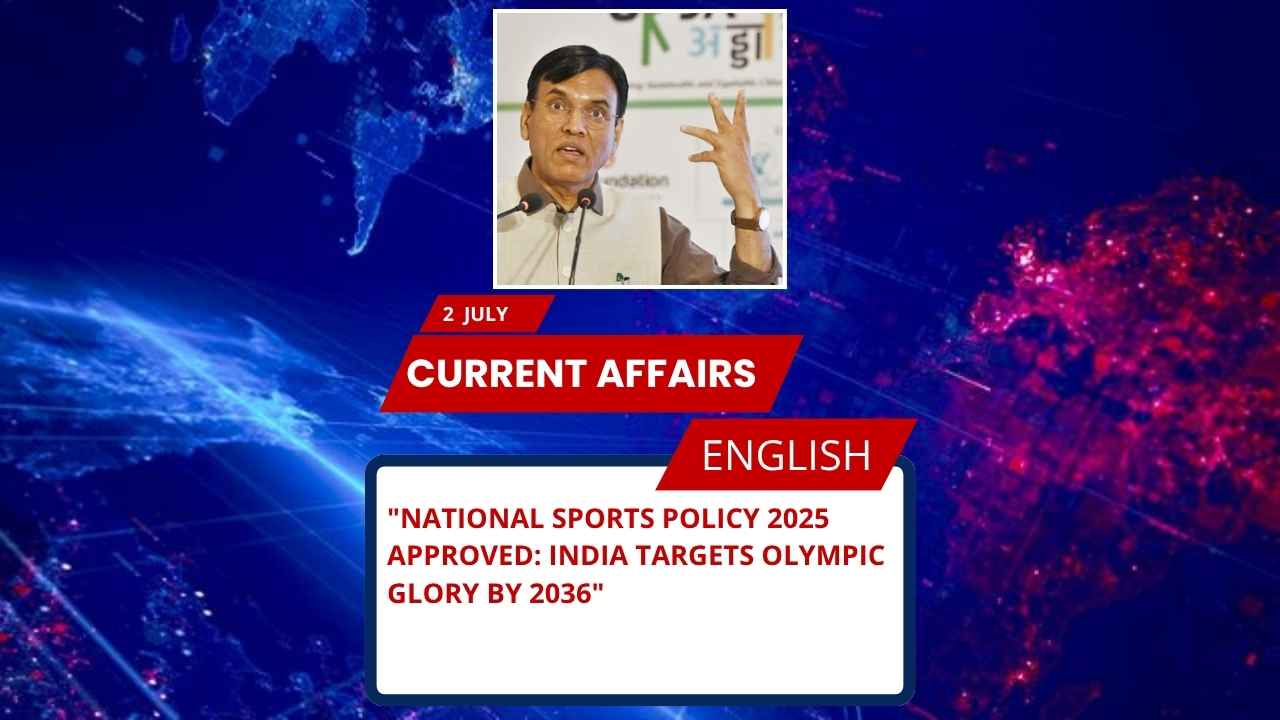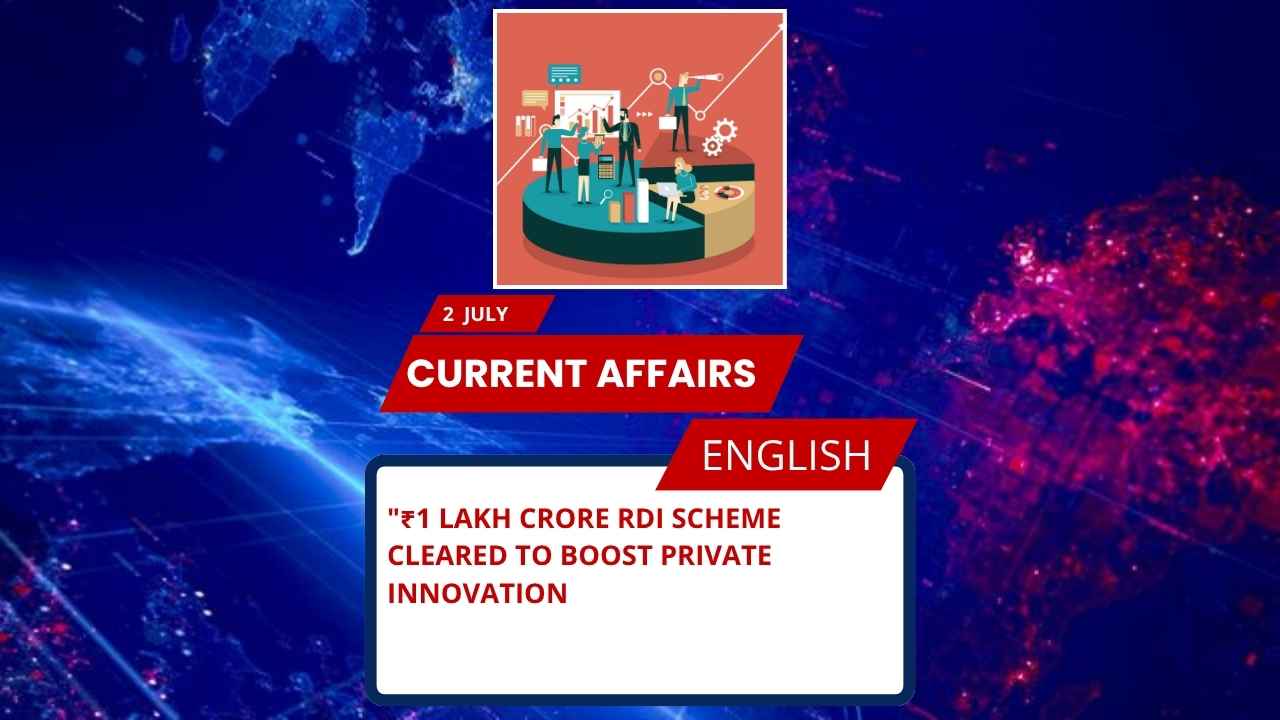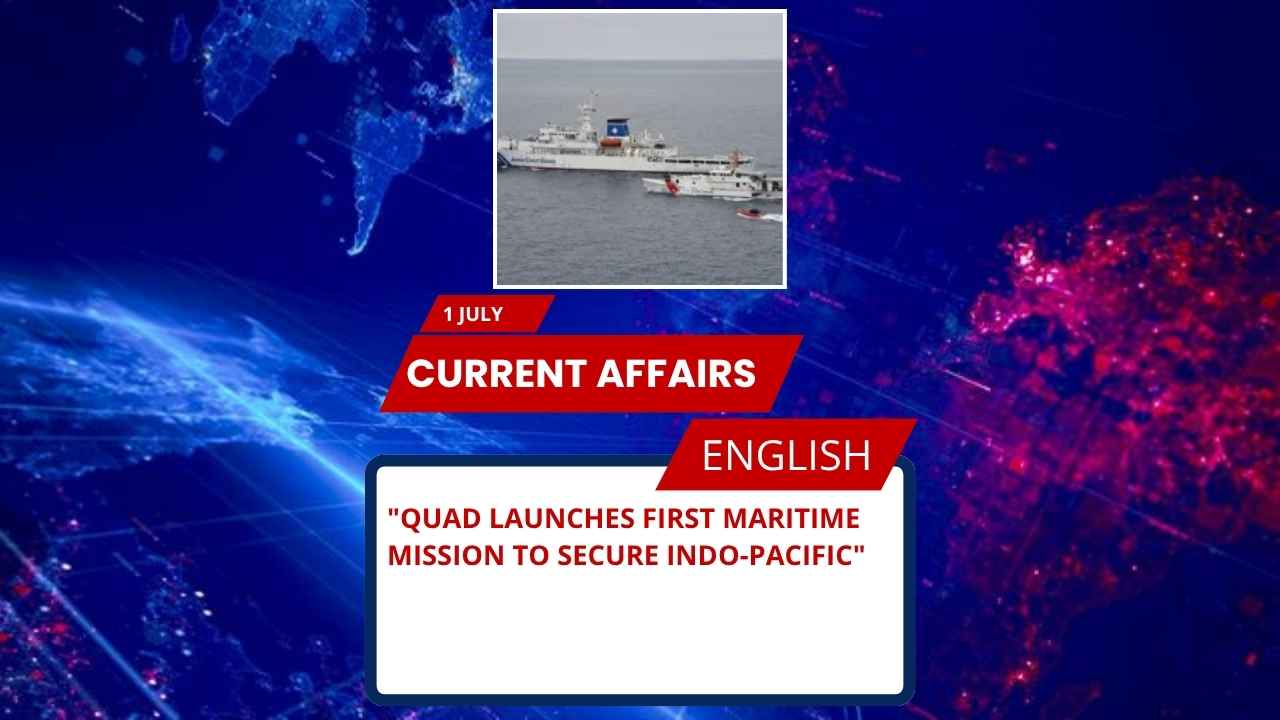
Key Points for SSC, UPSC & Govt Exams
- First-ever Quad-at-Sea Ship Observer Mission launched
- Countries Involved: India, USA, Japan, Australia (Quad Members)
- Mission Objective: Enhance maritime security and interoperability in Indo-Pacific
- Launched under: Wilmington Declaration 2024
- Strategic Importance: Counters China’s growing influence in Indo-Pacific
- Indian Vision Supported: SAGAR & Indo-Pacific Oceans Initiative (IPOI)
- Includes Women Officers from all four nations
- Ship Used: US Coast Guard Cutter (USCGC) Stratton
Complete Details
India, along with its Quad partners—the United States, Japan, and Australia—has launched the first-ever Quad-at-Sea Ship Observer Mission in the Indo-Pacific. This historic mission is aimed at boosting maritime security, domain awareness, and joint operational coordination in the strategically critical Indo-Pacific region.
The mission was officially launched under the Wilmington Declaration 2024, following a commitment made during the Quad Leaders’ Summit in September 2024. Two officers, including women, from each participating country, have embarked on the US Coast Guard Cutter (USCGC) Stratton, which is currently en route to Guam.
This cross-embarkation mission marks a significant milestone in strengthening coast guard collaboration among Quad nations, reflecting their shared commitment to a free, open, inclusive, and rules-based Indo-Pacific.
The initiative is aligned with India’s strategic maritime vision of SAGAR (Security and Growth for All in the Region) and supports the broader Indo-Pacific Oceans Initiative (IPOI). The Indian government has repeatedly stressed the need for respect for sovereignty, territorial integrity, and the peaceful settlement of disputes based on international law.
This move gains further importance as it seeks to counter China’s increasing militarization and strategic influence in the region, where it is actively pursuing military bases and pushing territorial claims.
Important Facts about Involved Organizations & Countries
QUAD (Quadrilateral Security Dialogue)
- Members: India, USA, Japan, Australia
- Purpose: Strategic dialogue for a free and open Indo-Pacific
- First Summit: 2017 (revived format)
- Key Areas: Maritime security, cyber security, climate change, infrastructure
India
- Capital: New Delhi
- PM: Narendra Modi
- Key Missions: SAGAR, IPOI
- Important Naval Base: INS Kadamba (Karwar), Andaman & Nicobar Command
USA
- Capital: Washington D.C.
- President: Joe Biden
- Naval Command: Indo-Pacific Command (INDOPACOM)
Japan
- Capital: Tokyo
- PM: Fumio Kishida
- Naval Force: Japan Maritime Self-Defense Force
Australia
- Capital: Canberra
- PM: Anthony Albanese
- Coast Guard Equivalent: Australian Border Force Maritime
Possible Exam MCQs
Q1. Which countries are part of the Quad-at-Sea Ship Observer Mission launched in 2025?
A. India, China, USA, Japan
B. India, USA, Japan, Australia
C. India, USA, Australia, Russia
D. India, Japan, Australia, UK
Correct Answer: B
Q2. The Quad-at-Sea Mission was launched under which declaration?
A. Tokyo Maritime Pact
B. Wilmington Declaration 2024
C. Indo-Pacific Summit Charter
D. Malabar Naval Agreement
Correct Answer: B
Q3. What is the name of the US vessel used for the Quad-at-Sea Mission?
A. USS Ronald Reagan
B. USCGC Stratton
C. INS Vikrant
D. HMS Defender
Correct Answer: B
Q4. Which Indian maritime initiative aligns with the Quad-at-Sea Mission?
A. Blue Economy Scheme
B. SAGAR
C. Jal Shakti Abhiyan
D. Swachh Sagar Mission
Correct Answer: B
Q5. Where is the Quad-at-Sea Ship Observer Mission currently headed?
A. Maldives
B. Hawaii
C. Guam
D. Singapore
Correct Answer: C
UPSC-style FAQs with Model Answers
Q1. What is the significance of the Quad-at-Sea Ship Observer Mission for India’s maritime diplomacy?
Answer:
The Quad-at-Sea Ship Observer Mission represents a strategic shift in India’s approach to maritime diplomacy. It reflects India’s growing alignment with like-minded democracies in promoting a rules-based maritime order in the Indo-Pacific. This mission allows for enhanced interoperability, joint readiness, and real-time domain awareness. Importantly, it complements India’s vision of SAGAR (Security and Growth for All in the Region) and the Indo-Pacific Oceans Initiative (IPOI), both aimed at ensuring security, connectivity, and sustainable development in the region. It also showcases India’s commitment to peace, sovereignty, and international law.
Q2. How does the Quad-at-Sea Mission align with India’s Indo-Pacific strategy?
Answer:
The Quad-at-Sea mission is a practical extension of India’s Indo-Pacific strategy. India has consistently advocated for a free, open, and inclusive Indo-Pacific, and this mission operationalizes that vision. The presence of Indian officers on a US naval vessel signifies trust, collaboration, and the shared commitment of Quad nations to maritime stability. It also boosts India’s role as a net security provider in the region and offers a counterweight to the growing Chinese assertiveness in regional waters.
Q3. Why is the Indo-Pacific region geopolitically important for India and the Quad?
Answer:
The Indo-Pacific is home to critical maritime trade routes, accounting for over 60% of global maritime trade. For India, this region is vital to economic and energy security. The Quad views it as a strategic space where freedom of navigation, overflight, and peaceful resolution of disputes must be ensured. The Quad-at-Sea mission is a proactive measure to prevent regional hegemony by any single power, especially China, which has been militarizing key islands and seeking strategic concessions. Hence, the region’s security directly impacts India’s economic and geopolitical stability.
Q4. What are the implications of women officers participating in such multinational missions?
Answer:
The inclusion of women officers from all Quad nations is a significant step towards gender inclusion and leadership in global maritime affairs. It promotes gender equality in defence services and sets a precedent for inclusive participation in strategic missions. For India, it reflects the evolving role of women in national security and global diplomacy. It also projects a progressive image of Quad countries committed to diversity and equal opportunity in security roles.



